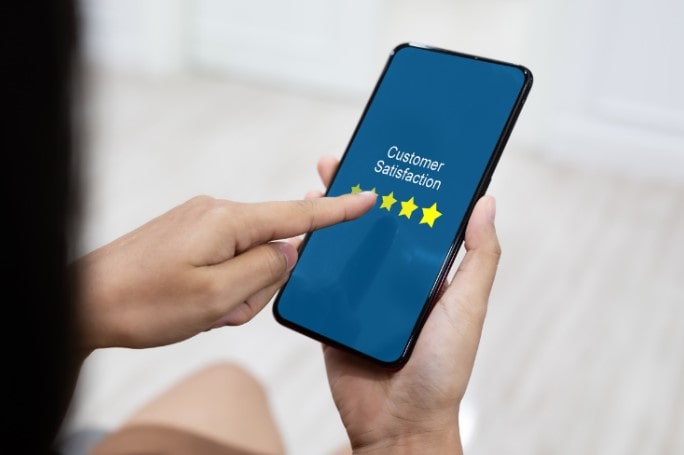From Buttons To Braille: How We Design Apps For Every User
Right now, over one billion people worldwide live with some form of disability—that's roughly 15% of the global population. Yet most mobile apps are built as if everyone sees, hears, and interacts with their phone in exactly the same way. This disconnect isn't just unfair; it's bad business. When we design apps that work for everyone, we're not just doing the right thing—we're creating better experiences that benefit all users.
The thing is, inclusive design isn't about building separate apps for different groups of people. It's about creating one app that adapts to how each person needs to use it. Someone might navigate your app using voice commands, another person might rely on high contrast colours, and someone else might need larger touch targets. The beauty of universal access is that these improvements often make apps easier for everyone to use.
Good design is inclusive design—when we remove barriers for some users, we create smoother experiences for all users
Throughout this guide, we'll explore practical ways to make your mobile app accessible to users with different abilities. From visual impairments to motor difficulties, we'll cover the design principles and technical approaches that ensure your app works brilliantly for every single person who downloads it. Because at the end of the day, great apps don't exclude—they welcome everyone in.
What Makes Apps Work for Everyone
I've been building apps for years now and one thing that strikes me time and time again is how we often design for people exactly like ourselves. We assume everyone holds their phone the same way, sees colours the same way, and hears sounds the same way. But that's simply not true—and it's a massive oversight that affects millions of users.
When we talk about making apps work for everyone, we're really talking about inclusive design. This means creating apps that people can use regardless of their abilities, age, or circumstances. It's not about adding special features as an afterthought; it's about building accessibility into the very foundation of your app from day one.
The Real Impact of Inclusive Design
Here's what many people don't realise: accessible design benefits everyone, not just people with disabilities. Those big, clear buttons you add for users with motor difficulties? They're brilliant for anyone trying to use an app whilst walking or in a moving car. The captions you include for deaf users? They're perfect for people watching videos in quiet libraries or noisy cafés.
The best part is that inclusive design often leads to cleaner, more intuitive apps that work better for everyone—it's a win-win situation that makes good business sense too.
Understanding Different Types of Disabilities
When we talk about inclusive design in mobile apps, we're not just talking about one group of people—we're talking about the millions of users who experience the world differently. Some disabilities are visible, others aren't. Some people are born with them, others develop them over time. The key thing to understand is that disability affects everyone differently, and our apps need to work for all of them.
Visual impairments range from complete blindness to colour blindness to low vision. Someone might struggle to see small text, whilst another person relies entirely on a screen reader to navigate your app. Then there are hearing impairments—some users are completely deaf, others have partial hearing loss. Motor disabilities affect how people interact with touchscreens; they might have limited hand mobility or use assistive devices to control their phone.
The Main Categories We Design For
- Visual impairments (blindness, low vision, colour blindness)
- Hearing impairments (deafness, partial hearing loss)
- Motor disabilities (limited mobility, tremors, paralysis)
- Cognitive disabilities (dyslexia, ADHD, memory issues)
- Temporary disabilities (broken arm, eye surgery recovery)
What's interesting is that designing for permanent disabilities often helps everyone. Large text benefits people with reading glasses; captions help users in noisy environments. This is what makes universal access so powerful—when we design thoughtfully, we create better experiences for all users.
Remember that many users have multiple disabilities or conditions that change over time. Design flexibility into your app so it can adapt to different needs.
Making Apps Easy to See and Read
When I'm working with clients on app design, one of the biggest challenges we face is making text readable for everyone. You'd be surprised how many apps fail at this basic requirement—text that's too small, colours that blend together, or fonts that are just impossible to read.
The good news is that fixing these issues isn't rocket science. We start with text size; anything smaller than 16 pixels is going to cause problems for many users. I always tell my team to test their designs on an actual phone, not just their massive computer screens. What looks fine on a 27-inch monitor can become microscopic on a mobile device.
Colour and Contrast That Actually Works
Colour contrast is where things get technical, but it's absolutely worth understanding. We use tools to check that our text has enough contrast against its background—the official guidelines require a ratio of at least 4.5:1 for normal text. That means no grey text on white backgrounds or, heaven forbid, yellow text on white.
- Use high contrast between text and background colours
- Test your app in bright sunlight and dark rooms
- Never rely on colour alone to convey information
- Provide options for users to adjust text size
- Choose simple, clear fonts over decorative ones
The best part about designing for better visibility? It makes your app better for everyone, not just users with visual impairments.
Building Apps That Work Without Sound
Sound can be brilliant for apps—it gives feedback, alerts users to notifications, and makes interactions feel more responsive. But here's the thing: not everyone can hear these audio cues, and plenty of people use their phones on silent anyway. When we're designing for universal access, we need to make sure our mobile app works perfectly whether someone has their volume cranked up or completely off.
The biggest mistake I see developers make is relying solely on audio alerts for important information. A beep when a message arrives is nice, but what happens when someone can't hear it? We need visual alternatives for everything—flashing lights, vibration patterns, or clear on-screen notifications that don't disappear too quickly.
Visual Feedback That Actually Works
Every sound in your app should have a visual counterpart. Button presses need visual feedback like colour changes or animations; error messages should appear on screen rather than just playing an error sound. This isn't just good inclusive design practice—it makes apps better for everyone.
The best mobile apps communicate through multiple senses, never relying on just one method to convey important information to users
Subtitles and captions are non-negotiable for any video content. But go beyond the basics—provide transcript options and make sure your captions are properly synchronised and easy to read against any background.
Creating Touch-Friendly Interfaces for All Hands
After years of building mobile apps, I've learned that not everyone interacts with touchscreens the same way. Some people have limited mobility in their hands, others might have tremors, and some use assistive devices to navigate apps. The good news is that designing for these different needs often makes apps better for everyone.
The size of your buttons and touch targets makes a huge difference. Apple recommends 44x44 pixels as the minimum size, but I'd suggest going bigger when possible—especially for important actions. Small buttons are frustrating for anyone, but they become impossible barriers for users with motor difficulties.
Making Touch Interactions Work Better
Spacing between interactive elements is just as important as their size. When buttons are too close together, it's easy to tap the wrong one by mistake. This becomes a real problem for people with conditions like arthritis or Parkinson's disease.
- Use large, easy-to-tap buttons (at least 44x44 pixels)
- Add plenty of space between clickable elements
- Support both single taps and longer presses
- Allow users to adjust gesture sensitivity
- Provide clear feedback when buttons are pressed
Supporting different types of gestures helps too. Some users find swiping easier than tapping, whilst others prefer the opposite. The best apps give people options rather than forcing everyone to use the same interaction method.
How Screen Readers Navigate Your App
Screen readers are incredible pieces of software that convert text and interface elements into speech or braille output. They're used by people who are blind or have severe visual impairments to interact with mobile apps. But here's the thing—they don't work the same way as touching and tapping around your screen.
When someone uses a screen reader, they navigate through your app in a very specific order. The software reads out each element one by one, starting from the top of the screen and working its way down. This means your app needs to have a logical structure that makes sense when experienced as a linear sequence rather than a visual layout.
Making Elements Screen Reader Friendly
Every button, image, and piece of text needs what we call "labels" that describe what they do. A shopping cart icon might look obvious to you, but a screen reader needs to know it's a "shopping cart button" to announce it properly. Without these labels, users just hear "button" or "image"—which isn't helpful at all.
Always test your app with VoiceOver on iOS or TalkBack on Android switched on. You'll quickly discover which parts of your app make no sense to screen reader users.
The order matters too. If your screen reader jumps from a "buy now" button to a random menu item, then to a product description, users will get completely lost trying to understand your app's layout and functionality.
Testing Your App with Real Users
Here's where things get real—and I mean properly real. You can run automated tests until you're blue in the face, but nothing beats putting your app in front of actual users with disabilities. This is where you'll discover what really works and what doesn't.
We always recruit people who use assistive technologies daily; screen reader users, people with motor impairments, those with hearing difficulties. They spot problems we'd never think of. Like when a user told us our loading spinner was completely silent—screen reader users had no idea the app was doing anything at all.
Getting Started with Real User Testing
Start small with just three to five users per disability type. Watch them use your app without interrupting (this bit is hard but trust me, it's worth it). Take notes on where they struggle, what they skip, and what makes them give up completely.
What You'll Learn
Real users will teach you things no guideline ever could. They'll show you shortcuts you never knew existed, point out confusing navigation patterns, and highlight features that actually make their lives easier. One user showed us how she used voice control in a way we'd never considered—it completely changed how we designed our button layouts.
This testing isn't a one-time thing either. Make it part of your regular development process and you'll build better apps for everyone.
Conclusion
Building apps that work for everyone isn't just the right thing to do—it's good business sense. I've watched countless apps fail because they ignored whole groups of users, whilst others have thrived by welcoming everyone from the start. When you design with inclusive design principles, you're not just helping people with disabilities; you're creating better experiences for all your users.
The techniques we've covered—from proper colour contrast to screen reader support—might seem like extra work at first. But here's what I've learned after years of mobile app development: it's always easier to build accessibility in from the beginning than to add it later. Plus, many of these features help everyone, not just users with specific needs.
Universal access shouldn't be an afterthought or a nice-to-have feature. It should be baked into every decision you make about your mobile app. From the first wireframe to the final launch, ask yourself: can everyone use this? If the answer is no, you've got more work to do. Your users will thank you for it, and you'll sleep better knowing your app truly serves everyone who wants to use it.
Share this
Subscribe To Our Blog
You May Also Like
These Related Stories

Why Ignoring App Accessibility Could Cost You Millions Of Users

From Wireframe To Wow: The Complete App Design Process





